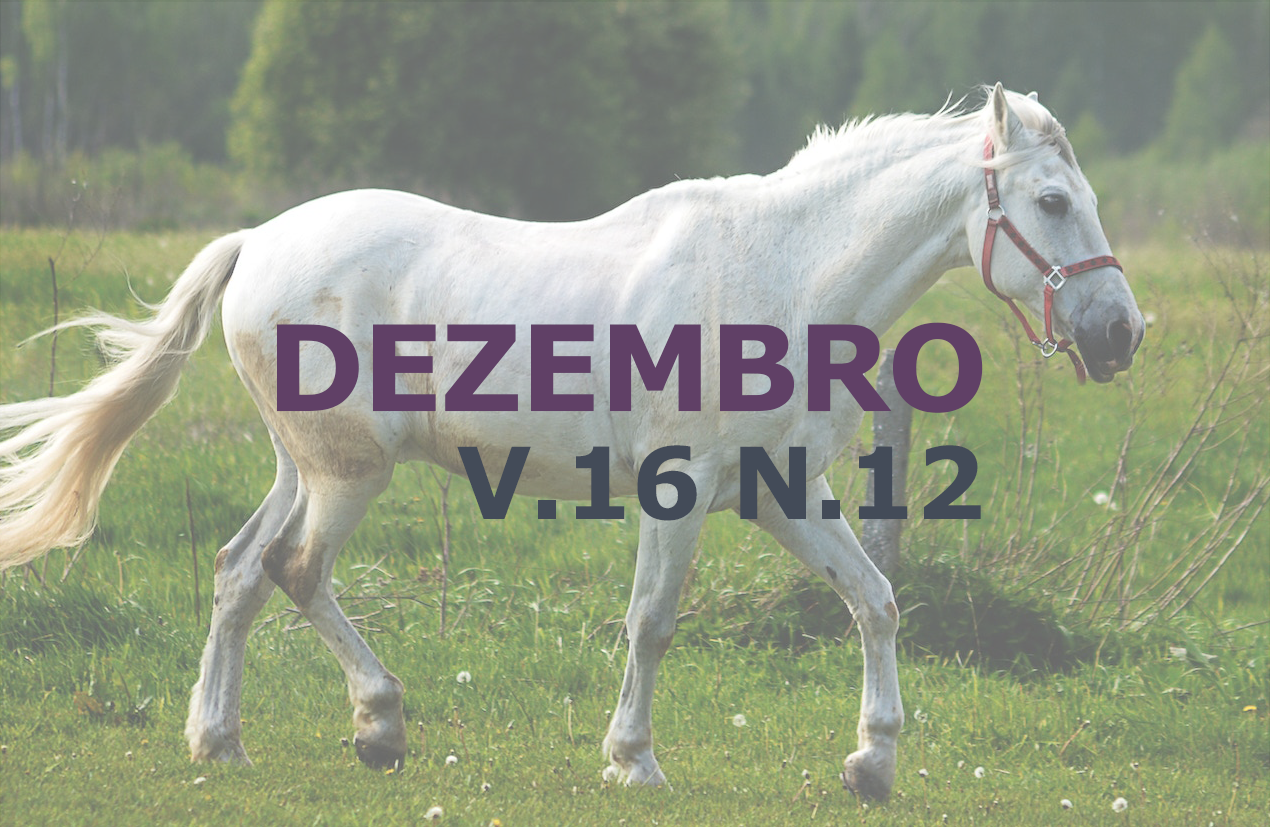Primary splenic torsion in a dog: Case report
DOI:
https://doi.org/10.31533/pubvet.v16n12a1276.1-6Keywords:
Canine, ultrasonography, spleen, surgeryAbstract
Primary splenic torsion occurs due to congenital or traumatic factors. It affects a small number of animals, usually large and deep-chested dogs. The objective of this work is to report a case of primary splenic torsion in a twelve-year-old bitch Labrador Retriever canine. The animal presented pain and abdominal enlargement, apathy, hyperthermia and hyporexia. After performing laboratory tests and total abdominal ultrasound, it was possible to diagnose splenic torsion and the animal was referred for emergency surgical procedure. Torsion was confirmed during exploratory laparotomy and splenectomy was performed. The animal died in the immediate postoperative period, but the effectiveness of the ultrasound examination for the detection of splenic torsion was observed.
References
Azevedo, F. D., Veiga, C. C. P., Scott, F. B., Fernandes, J. I., Ramos, A. S., & Mendonça, E. C. L. (2011). Torção primária do baço em cães – Relato de caso. Revista Brasileira de Medicina Veterinária, 33(2), 89–94.
Bragato, N., Borges, N. C., & Fioravanti, M. C. S. (2017). B-mode and Doppler ultrasound of chronic kidney disease in dogs and cats. Veterinary Research Communications, 41(4), 307–315. https://doi.org/10.1111/jvim.15488.
Brockman, D. J., Washabau, R. J., & Drobatz, K. J. (1995). Canine gastric dilatation/volvulus syndrome in a veterinary critical care unit: 295 cases (1986-1992). Journal of the American Veterinary Medical Association, 207(4), 460–464.
Fossum, T. W. (2014). Cirurgia de pequenos animais (4th ed., Vol. 1). Elsevier Brasil.
Goldsmid, S. E., Davis, P., & Pechman, R. (1994). Successful derotation of a splenic torsion in a racing greyhound. Journal of Small Animal Practice, 35(2), 112–115.
Konde, L. J., Wrigley, R. H., Lebel, J. L., Park, R. D., Pugh, C., & Finn, S. (1989). Sonographic and radiographic changes associated with splenic torsion in the dog. Veterinary Radiology & Ultrasound, 30(1), 41–45.
Mai, W. (2006). The hilar perivenous hyperechoic triangle as a sign of acute splenic torsion in dogs. Veterinary Radiology & Ultrasound, 47(5), 487–491.
Marinho, P. V. T., Minto, B. W., Avante, M. L., Cardoso, L. D., Aquino, G. V., Feitosa, C. C., & De Nardi, A. B. (2018). Torção esplênica primária em cão como causa atípica de abdômen agudo. Acta Scientiae Veterinariae, 46(1), 313.
Montgomery, R. D., Henderson, R. A., Horne, R. D., & Bowers, T. S. (1990). Primary splenic torsion in dogs: literature review and report of five cases. Canine Practice, 15(2), 17–21.
Neath, P. J., Brockman, D. J., & Saunders, H. M. (1997). Retrospective analysis of 19 cases of isolated torsion of the splenic pedicle in dogs. Journal of Small Animal Practice, 38(9), 387–392.
Ortiz, B. C., Oliveira, C. M., Teixeira, L. G., Koch, M. C., & Muller, V. S. (2016). Torção esplênica primária em um cão: relato de caso. Arquivo Brasileiro de Medicina Veterinária e Zootecnia, 68(5), 1195–1200.
Reinhart, J. M., Sherwood, J. M., KuKanich, K. S., Klocke, E., & Biller, D. S. (2015). Chronic splenic torsion in two dogs. Journal of the American Animal Hospital Association, 51(3), 185–190. https://doi.org/10.5326/JAAHA-MS-6129.
Rial, A. F., Walesca, S., Yamanaka, V. S., Cassanego, L. H., Wilmsen, M. O., Oliveira, S., Meirelles, C. F., Martins, L. G. A., & Lima, M. C. (2010). Relato de caso: Torção de coto esplênico . PUBVET, 4(3), Ed. 138.
Salgueiro, N. B. M., Lacreta Júnior, A. C. C., Tavares, A. C. G., & Santos, M. A. S. (2017). Sonographic aspects of splenic torsion due to abdominal eventration in a dog. Acta Scientiae Veterinariae, 45, 5.
Santos, B. S., Gomes, C., Camargo, J. F., Trindade, A. B., Gouvea, A. S., Driemeier, D., & Contesini, E. A. (2019). Torção esplênica primária associado à baço acessório em cão. Acta Scientiae Veterinariae., 42(Sup. 1), 1–7.
Saunders, H. M., Neath, P. J., & Brockman, D. J. (1998). B-mode and Doppler utrasound imaging of the spleen with canine splenic torsion: a retrospective evaluation. Veterinary Radiology & Ultrasound, 39(4), 349–353.
Schnier, L. M. (2010). A case of splenic torsion with progressive anemia and thrombocytopenia. The Canadian Veterinary Journal, 51(5), 527–529.
Spangler, W. L., & Culbertson, M. R. (1992). Prevalence, type, and importance of splenic diseases in dogs: 1,480 cases (1985-1989). Journal of the American Veterinary Medical Association, 200(6), 829–834.
Weber, N. A. (2000). Chronic primary splenic torsion with peritoneal adhesions in a dog: case report and literature review. Journal of the American Animal Hospital Association, 36(5), 390–394. https://doi.org/10.5326/15473317-36-5-390.
Downloads
Published
Issue
Section
License
Copyright (c) 2022 Bianca Mendonça Faria, Brenda do Socorro Preuss Cardoso, Carlos Vinicius Cunha do Carmo, Giovanna Beatriz Tavares Santos, José Ricardo Nascimento de Souza Neto

This work is licensed under a Creative Commons Attribution 4.0 International License.
Você tem o direito de:
Compartilhar — copiar e redistribuir o material em qualquer suporte ou formato
Adaptar — remixar, transformar, e criar a partir do material para qualquer fim, mesmo que comercial.
O licenciante não pode revogar estes direitos desde que você respeite os termos da licença. De acordo com os termos seguintes:
Atribuição
— Você deve dar o crédito apropriado, prover um link para a licença e indicar se mudanças foram feitas. Você deve fazê-lo em qualquer circunstância razoável, mas de nenhuma maneira que sugira que o licenciante apoia você ou o seu uso. Sem restrições adicionais
— Você não pode aplicar termos jurídicos ou medidas de caráter tecnológico que restrinjam legalmente outros de fazerem algo que a licença permita.





